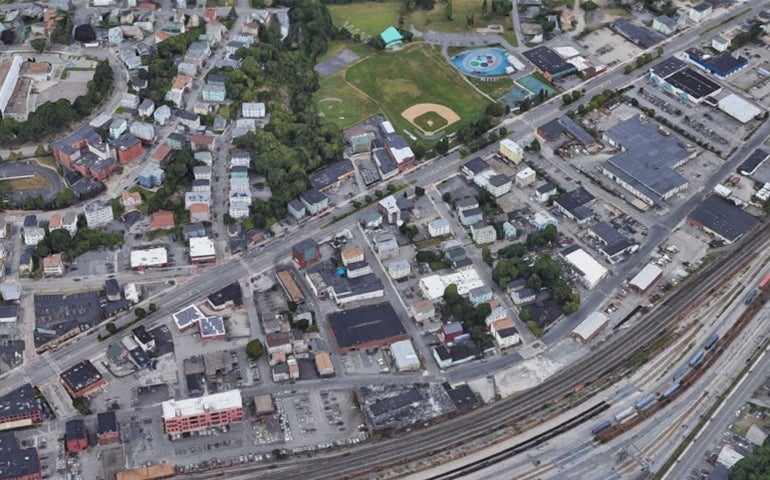A nonprofit study led by a group of real estate professionals and commissioned by the City of Worcester has made a series of recommendations for improving the Shrewsbury Street neighborhood – including making it more pedestrian friendly and lifting a retail zoning requirement for multifamily developments – which is tied to the City’s effort to get a private developer to revitalize a Department of Public Works property.
The recommendations came from a panel made up of developers, architects, engineers, a MassDevelopment official, and other people related to the real estate development industry. The companies represented were largely Boston-based with some having Worcester offices.
The Urban Land Institute of Boston/New England convened that Technical Assistance Panel with the aim of advising the City how it could better use property off of Worcester’s restaurant row, and improve traffic and parking in the area. The study was funded by the MassDevelopment Technical Assistance Program.

The report, dated Jan. 23 outlines challenges like parking, possible environmental site contamination, the need to relocate the Worcester Department of Public Works & Parks operation currently located in the area, and the area’s proximity to the CSX rail yard behind the sites on East Worcester Street and Albany Street.
The report makes recommendations for integrating potential development architecturally into the neighborhood, and to better connect Shrewsbury Street to Downtown Worcester for bicycles and pedestrians. It presents a number of options to make Shrewsbury Street more pedestrian- and bicycle-friendly.
The panel identified four phased zones for future development, the first being the complete redevelopment of the DPW garage at 29 Albany St., the subject of a request for private development proposals issued by the City in July.
“The DPW campus’ location in close proximity to Union Station, UMass Medical Center, and downtown Worcester provides extensive opportunity for redevelopment,” Andrew Colber, TAP chair and vice president at Boston developer WinnCompanies, said in a Tuesday press release from ULI. “Recognizing the goal of maintaining the sense of neighborhood, we recommend a phased redevelopment that will address operational needs, economic growth, and community amenities.”
Zone 2 consists of historic, city-owned buildings at 10 East Worcester St., recommended for adaptive reuse.
Zones 3 and 4 consist of properties abutting the rail yard, like the DPW salt and sand storage facility, which would require significant infrastructure improvements for redevelopment.
Members of the panel included 10 real estate development, architecture, and engineering professionals:
- Andrew Colbert, senior project director, WinnCompanies
- Aida Diakite, assistant project manager, Trinity Financial of Boston
- Tiffany Gallo, vice president of project development, Timberline Construction of Canton
- Amanda Gregoire, vice president of real estate, MassDevelopment
- Abigail Hammett, associate principal/ managing director for Boston architectural firm brick
- Doug Manz, partner, chief investment officer, The HYM Investment Group of Boston
- Paul Momnie, real estate attorney, Goulston Storrs, a Boston law firm
- Keri Pyke, chief people officer, Howard Stein Hudson, a Boston-based engineering firm with a Worcester office
- Seth Riseman, principal, Handel Architects, a Boston architectural firm
- Paul Schlapobersky, associate principal, SCB, Solomon Cordwell Buenz, a national architecture firm with an office in Boston.
ULI identified several local officials and area business owners as stakeholders who participated in the study:
- Dianna Biancheria, resident/former Worcester School Committee member
- Craig Blais, president and CEO, Worcester Business Development Corp.
- Gina Cariglia, resident/business owner, Gina’s Hair Salon
- Charran Fisher, resident, CEO at Fisher Contracting Corp. of Worcester, Worcester License Commission member
- Albert LaValley, president of Worcester development firm Sustainable Comfort, city resident, and chair of Worcester Planning Board
- Candy Mero-Carlson, District 2 City Councilor
- Steve Tankanow, business owner, Bancroft School of Massage

